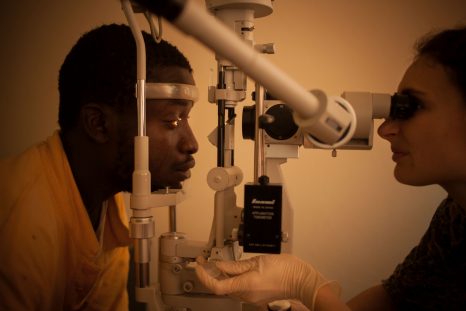Results of follow-up show that on average one year after their initial period in hospital, 3 in 4 survivors still report health problems.
40% suffer from tiredness or fever, but also from muscular (38%) and abdominal pain (22%), vision disorders that are sometimes serious and can lead to blindness (18%), and depression (17%). One quarter of survivors also claim to be victims of stigmatisation. As regards persistence of the virus in the semen, this is true: it can be found up to 18 months after the acute phase. This study has led the researchers to define what they now call the post-Ebola syndrome. This work is published in the journal The Lancet Infectious Diseases.
There are few data regarding people who have survived Ebola epidemics in the past. The reason: the too-small number of survivors and the inadequate structures for performing research in a state of emergency. The last epidemic of Ebola in West Africa was so large that it led both to an unprecedented number of deaths, and a number of survivors that had never been attained in the past (17,000 survivors). Given this unprecedented situation, basic medical and research questions emerged. What long-term complications could be caused by the virus? What might be the psychosocial consequences for the survivors? Is there a risk of delayed reactivation of the virus? How long does it persist in the body and what is the possibility of sexual transmission?
In order to answer all these questions, Inserm joined forces with the Guinean health authorities to organise follow-up of those who survived the infection. Researchers at the International Joint Unit “Translational Research on HIV and Infectious Diseases” (TransVIHMI; Inserm/IRD) established a follow-up cohort of people who had survived Ebola virus infection in Guinea, the PostEbogui cohort, in March 2015. 802 individuals (of the 1,270 reported survivors of the epidemic in Guinea) entered this multidisciplinary study, an average of one year after their initial infection.
They received biological, psychological and sociological follow-up, and their viral load was measured 1, 3, 6, 9 and 12 months after their inclusion in the cohort. Datas of this study refer to a follow-up until July 2016. Follow-up of immunological responses will be performed on a segment of the people, in partnership with the researchers of the Vaccine Research Institute (Inserm/ANRS).
45% of the participants are men. The median age is 28 years (range 1-79 years). One in five patients is a child under 18 years.
One year after their initial period in hospital, three quarters of survivors continue to report clinical symptoms.
Clinical data40% of patients in the cohort suffer from so-called symptoms of a general nature (tiredness/fever/anorexia). Vision disorders affect 18% of patients (conjunctivitis; visual deficits [up to blindness] and eye pain). 38% of patients suffer from musculoskeletal pain (joint pain and muscular weakness), 35% complain of headaches, 2% of deafness and 22% of abdominal pain.
“Fortunately, these symptoms tend to become less frequent over time, and they tend to become less severe the longer the period after the acute phase of the infection,” explains Eric Delaporte, director of the International Joint Unit “Translational Research on HIV and Infectious Diseases” (TransVIHMI).
Compared with adults, children have more episodes of fever in the long term, but less musculoskeletal pain and fewer eye problems than adults.
Biological and virological data
26% of survivors suffer from anaemia. Ebola virus is still present in the semen of 5% of men 1-18 months after infection. These results were published in greater detail in The Journal of Infectious Diseases in May 2016.
Psychological and sociological data
The risk of depression is increased in survivors. Moreover, 26% of patients claim to be stigmatised after contracting the disease.
“The results of this first large cohort allow us to better characterise what we now call the post-Ebola syndrome. Medical complications persist or appear after the acute phase of the infection, and are not negligible. They justify medical follow-up of patients with Ebola for at least 18 months following infection,” concludes Eric Delaporte.
